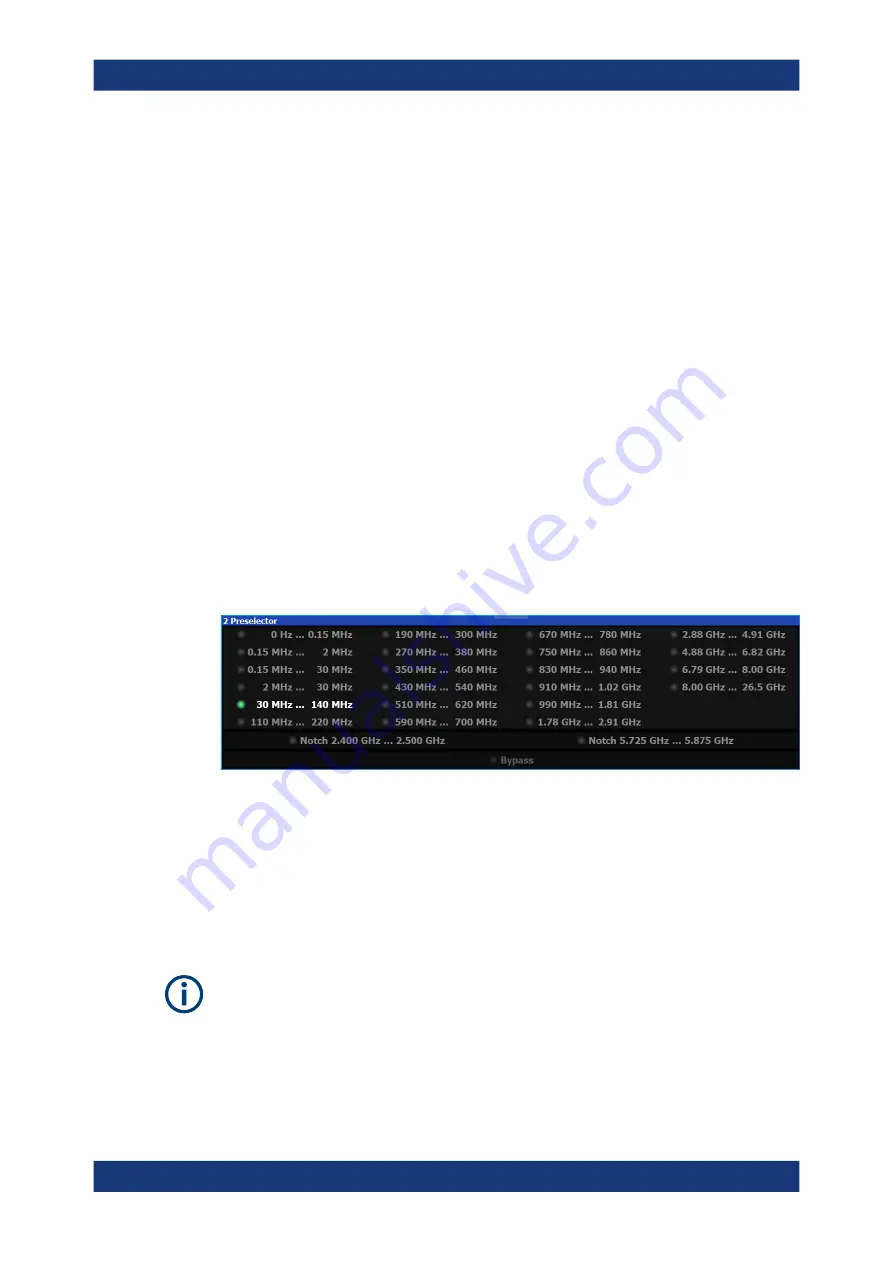
Configuration
R&S
®
ESW-K58
28
User Manual 1179.0880.02 ─ 03
●
The preamplifier is located after the preselection filters, reducing the risk of over-
loading the input mixer by strong out-of-band signals.
●
The optional low noise amplifier is located in front of the preselection filters which
increases the measurement sensitivity.
The gain of the preamplifier is automatically considered in the level display. The disad-
vantage of a lower large-signal immunity (intermodulation) is reduced by the "preselec-
tor".
5.3.2.3
Using the preselector
The "preselector" is another tool to control measurement sensitivity.
Preselection has the following effects on the measurement:
●
Preselection rejects most of the spectral energy which helps to protect the input
mixer and thus makes sure that the measurement results are valid and reliable.
●
Preselection filters out signals that you do not want to be displayed (selectivity) and
thus allows you to analyze only the frequency range you are interested in.
The "preselector" of the R&S
ESW consists of several filters which are automatically
applied during measurements. The filter that is used depends on the frequency that is
currently measured. You can see the list of filters and the progress in the "Preselector"
result display. The currently applied filter is indicated by a green LED, filters that are
outside the scan range are ignored.
Figure 5-1: Preselector result display. The green LED indicates the currently applied filter.
In the frequency range from 150
kHz to 30
MHz, you can preselect in a single stage
(150
kHz to 30
MHz). Or, you can split the preselection into two stages, each of which
applies a separate filter: one from 150
kHz to 2
MHz, and another from 2
MHz to
30
MHz.
In addition, the R&S
ESW provides several notch filters to suppress certain frequency
ranges completely.
Using the "preselector"
Switching the filters is a mechanical process. Avoid excessive filters switches, because
the hardware can wear out.
Amplitude
















































